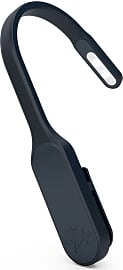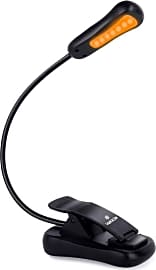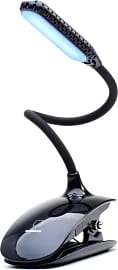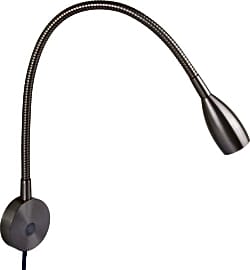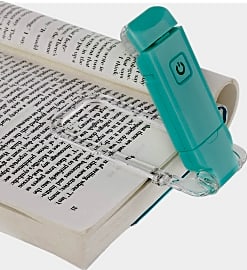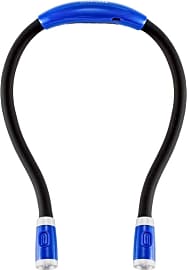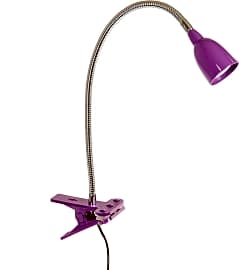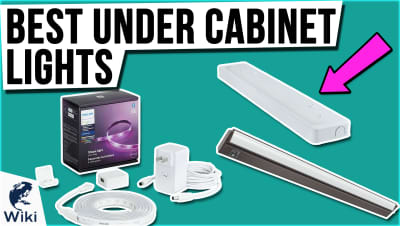The 10 Best Reading Lights

This wiki has been updated 40 times since it was first published in April of 2016. Perfect for enjoying your favorite novel in bed without disturbing your significant other, these reading lights come in highly portable designs that clip either onto your book or your furniture. Available in a range of power supply options, including battery and USB, they’re also good for illuminating intricate crafts, and for use on long flights, train rides, and camping trips. When users buy our independently chosen editorial recommendations, we may earn commissions to help fund the Wiki.
Editor's Notes
February 03, 2021:
We removed an older version of the Raniaco Clip and replaced it with a newer model. We also removed the Kedsum 7 Watt Flexible, which was designed to be more of a multi-purpose work light, as its weight and bulk make it less ideal for readers. New to the list, the Vekkia Amber is a good choice for those who like to avoid blue light before bed. Its warm amber glow is bright enough to read by but not too harsh. Adventurous readers might want to opt for the Vitchelo Headlamp, which is designed for campers and hikers. Whether you want to bring a novel into the wilderness or just read in bed without worrying about damaging your pages with a clip, this one is worth considering. The Dewenwils Bookworm is a good option for kids, as it comes in a variety of bright colors and is easy to use. It also doubles as a bookmark and folds flat for easy storage and transport.
April 24, 2019:
A good reading light should be versatile, portable, easy to power, and lightweight, not to mention, it should have multiple brightness settings. We prioritized these features and also ranked by quality, price, durability, and ease of use. The Trond Halo was afforded the top spot because it is well crafted and goes to great lengths to reduce eye strain, in addition to its myriad brightness and temperature settings. The Mighty Bright XtraFlex2 represents a solid deal for the budget conscious, while the LuminoLite Comfortable Hug enables users to go hands-free, which is helpful if you knit, or go jogging or walking in the evenings. The Mighty Bright Recharge comes in a handful of fun colors and is ultra-slim, making it ideal for travel.
We also added the Acegoo Bedside Minimalist for its quality, sleek appearance, and mounting capabilities, as many readers have a favorite spot and prefer to have a reliable, more permanent fixture.
Is Reading In The Dark Really Bad For Your Eyes?
However, there is some science behind the idea that dim light may detrimentally affect a child's vision.
According to most modern research, it seems as though the negative visual effects of reading in the dark are largely grounded in myth, at least for adults. However, there is some science behind the idea that dim light may detrimentally affect a child's vision. Let's take a moment to look at how our eyes adjust to different lighting conditions. When you are in a dim environment, your pupils dilate in an attempt to take in the most light possible. Light is what the cells in your retina use to provide information to your brain about what you see. As your pupil dilates, the light begins to hit your retina in different spots, slightly blurring the image.
When reading in dim light, the contrast between the white pages and black words decreases, prompting many people to pull a book closer to better see the text. As you vary the distance between your eyes and the book, the ciliary muscle contracts and expands, slightly reshaping the eye. This is another method by which your eyes work to bring the light to a focal point towards the back of retina.
In adults, the eyes are no longer in the developmental stages, so when the light once again increases, the pupils quickly shrink and the ciliary muscle relaxes. In children, though, constant reading in low light conditions may have the potential to cause the vitreous chamber in the eye to grow abnormally long. Because their eyes are still developing, it is possible this could result in myopia as they age.
Even if reading in dim light most likely isn't going to cause permanent eye damage to adults, there is no doubt that it causes the eyes to strain. Overworking the eyes results in a number of symptoms, such as soreness, burning, itching, dryness, headaches, blurred vision, difficulty focusing, and more.
Choosing The Right Style Of Reading Light
Generally, you will have three kinds of reading lights to choose from: freestanding, mountable, and clip-on. Freestanding lights can be a smart choice if you don't have anywhere convenient to clip a light onto, and don't want to deal with the hassle of mounting one. There are two drawbacks with freestanding lights, however. First, they are easy to accidentally knock over. Second, when in bed, it is often difficult to find a suitable place to set a freestanding reading light where it will fully illuminate the pages without casting a shadow on them. If using the reading light in an office setting, though, where the book will be laid flat on the desk, this often isn't an issue.
You can even find clip-on reading lights that also function as freestanding models or ones that are lightweight and compact enough to clip directly onto to the book itself.
Mountable lights avoid some of the drawbacks of freestanding lights, but come with their own pros and cons. The major benefit of this style is their stability. Once installed, you won't have to worry about knocking it over, and since it is attached to the wall, it will rarely get in the way. Many people find it a hassle to mount a light into their headboard or wall, though, especially those who don't have an electric screwdriver. Another issue is that, once mounted, they are pretty well permanent. If you change reading positions or move to a different spot in the room, you won't be able to take your reading light along with you.
Clip-on lights offer the perfect compromise between convenience, stability, and versatility. Because of the way they clip onto furniture, you will have a range of placement options. They can affix to a headboard, the edge of a table, or the stem of a large floor lamp. You can even find clip-on reading lights that also function as freestanding models or ones that are lightweight and compact enough to clip directly onto to the book itself. Clipping onto furniture makes them very stable and less likely to get knocked over, as well. If you want to change positions or move to another place in the room, it is easy to simply unclip the light and bring it along with you. All of these factors often make clip-on models the best style of reading light for most people.
Tips To Prevent Eye Strain While Reading
There are a number of things you can do to make reading less straining on the eyes. Ideally you should have multiple sources of illumination when reading. The best atmosphere for reading is a well-lit room with a focused pool of light on the reading material, and comfortable ambient lighting around the rest of the room. The goal is to avoid high light contrast between the area you are reading and the far ends of the room. It is natural for the eye to periodically wander away from the page while reading. This means that in a room with a high lighting contrast, the eyes are drifting between brightly lit areas and dark areas, causing the pupils to constantly dilate and shrink, and the ciliary muscle to constantly contract and expand. The result is a lot of eye strain and fatigue. If the reading light is the sole source of illumination, choose a model that has a wide throw so it creates more ambient light instead of just a focused beam.
After every 20 minutes of reading, take 20 seconds to look at an object at least 20 feet away.
You should also keep in mind your personal lighting needs. Younger people don't need as much light to read as older people. At age of 10, the eyes only need about 500 lumens to read without causing strain. By the age of 30, that number increases to about 1,000 lumens, and by the age of 60, the eyes require closer to 2,000 lumens.
It also helps to take regularly breaks. Try and follow the 20-20-20 rule. After every 20 minutes of reading, take 20 seconds to look at an object at least 20 feet away. This gives the eyes a moment to rest. Many people tend to stare at the page while reading. This can cause the eyes to dry out and become irritated. Make a conscious effort to remind yourself to blink or consider using artificial tears to periodically moisten the eyes.


